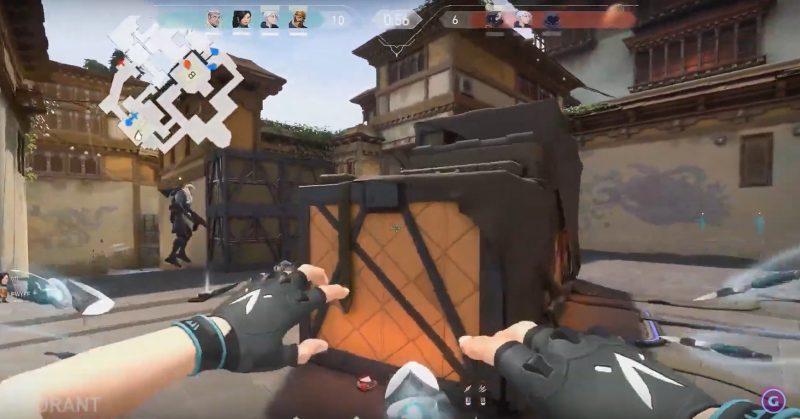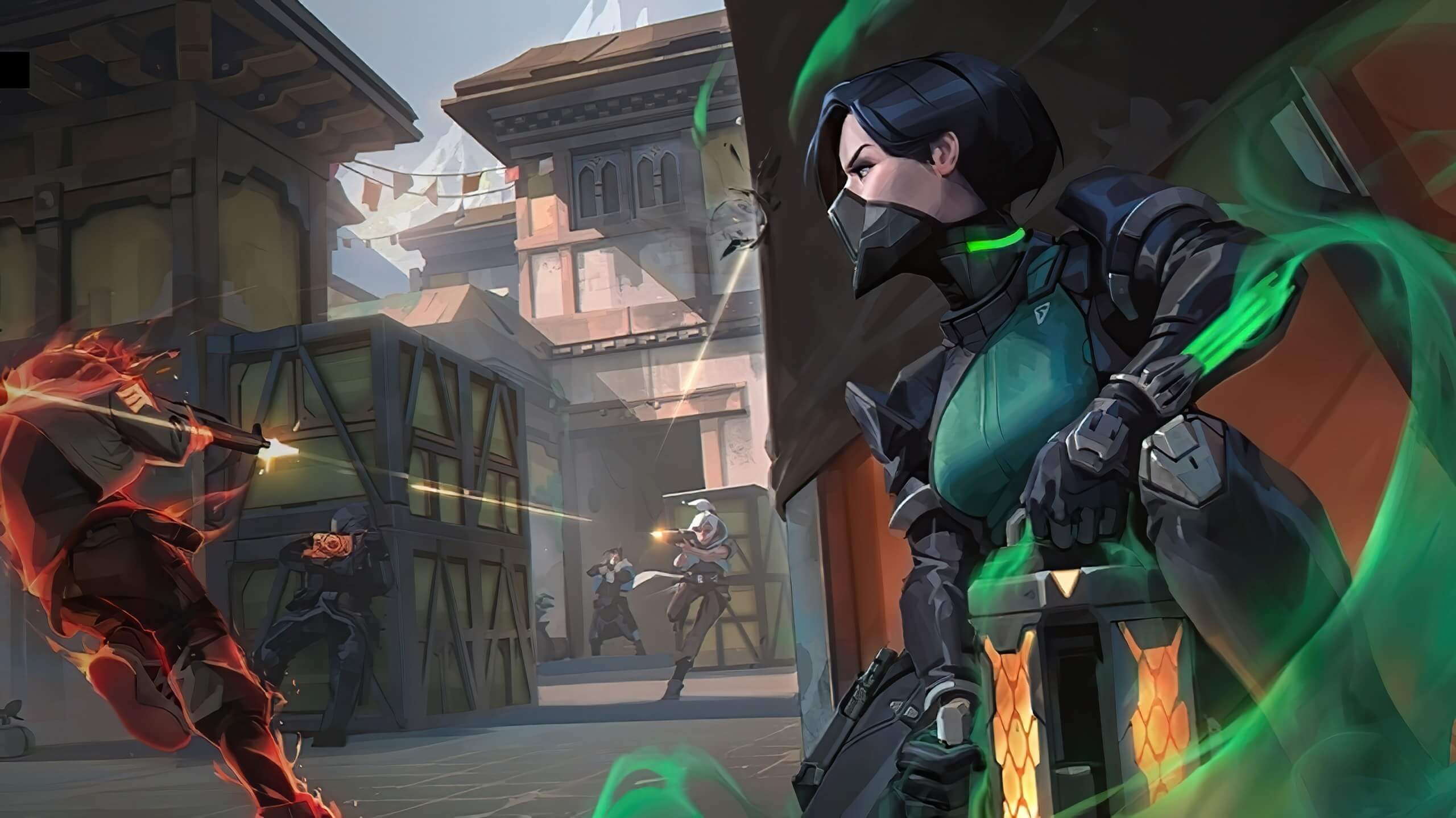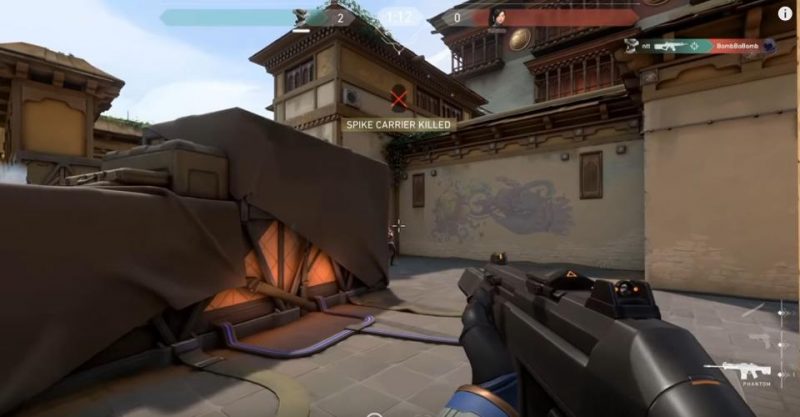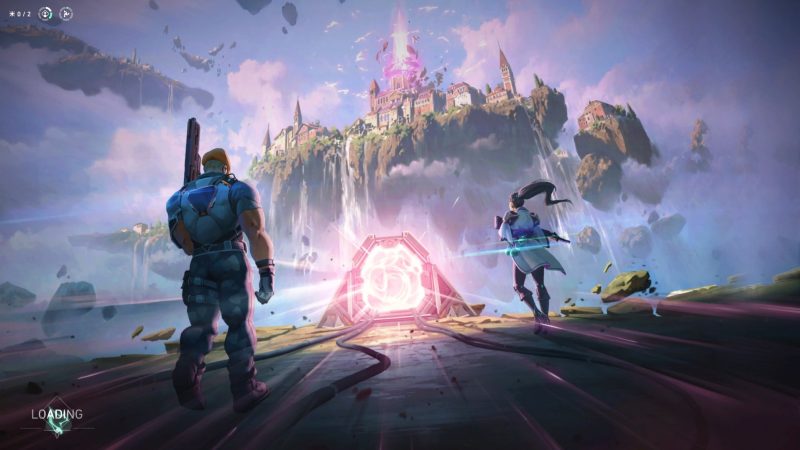Valorant is the new big thing these days with the game’s closed beta getting unprecedented hype and viewership on streaming platforms. The tactical shooter by Riot Games has been described by many as a combination of Overwatch and CS Go and while that may be true, Valorant has a lot to offer on its own as well.
One of the biggest reasons for the popularity of Valorant’s massive beta launch actually has nothing to do with the game itself but rather the way Riot Games has pushed it out. Essentially, a bunch of big streamers have been chosen by Riot to play the game with the viewers having a chance of winning a closed beta key for themselves just by watching the stream.
This has resulted in people not only opening up multiple streams at the same time for a greater chance to win a beta code, but also using bot accounts to inflate their chances further. Paired with an extremely well done marketing campaign, Valorant has managed to break all previous viewership records on streaming platforms.
However, while people do point towards the fact that the hype around the game might not be truly organic, those who are actually playing the game do believe that Valorant deserves it. Firstly, it feels extremely well-polished and it seems like Riot Games has put in a lot of R&D to tailor the game towards the eSports market.
In addition to that, Valorant specifically targets the existing CS Go demographic and with Valve’s complacency over Counter Strike, there aren’t many other good alternatives out in the market. This could actually prove to be a game changer if it can be accessible to a more casual audience (unlike CS Go) while also having that skill ceiling that only professional players can reach.
Furthermore, with the art-style also closely resembling the likes of Fortnite and Overwatch, Valorant seems to be targeting a lot of audiences at the same time. Whether it succeeds at hitting its targets is another question but it is definitely trying.
The tropes that Valorant gets from Overwatch are also super in-your-face with unique heroes and their special abilities. However, while this marriage between Overwatch and CS Go was something that no one asked for, it is something that we’re still getting and many people just don’t know how to feel about that.

Regardless of Valorant’s obvious inspirations and the emulation of a tried formula, the tactical hero shooter still deserves a chance. The game is only in beta and will presumably be made free-to-play in the near future.
However, due to the game’s early state, it lacks optimization and suffers from a lot of performance related issues like lag, low FPS, stutters, freezes and even crashes in some cases. And, despite Riot Games’ continued efforts to stay on top of these issues, the game is still plagued with a lot of bugs and glitches.
So, here is a comprehensive guide that covers different aspects of troubleshooting that might fix most of your low FPS, freezing, lag, stuttering, crashing and other performance issues.
1. Valorant System Requirements
While the chances of suffering from a legitimate bug in Valorant are still quite high since these are early days for the game, there’s a good chance that your PC rig may not be powerful enough to begin with. Valorant may be a combination of Overwatch and CS Go but being a newer game makes it much more demanding.
Furthermore, Valorant is also probably not as well optimized as other similar games but we can expect things to get better with time. However, it is still a relatively light game and should be able to run comfortably on most moderate gaming rigs.
The system requirements for Valorant are as follows:
Minimum System Requirements:
- Processor: Intel i3-370M
- RAM: 4 GB
- Operating System: Windows 7/8/10 64-bit
- Graphics Card: Intel HD 3000
- Pixel Shader: 3.0
- Vertex Shader: 3.0
- Dedicated Video RAM: 1024 MB
- HDD: 10 GB
- Network: Broadband Internet Connection
Recommended System Requirements:
- Processor: Intel Core i5-4460
- RAM: 4 GB
- Operating System: Windows 7/8/10 64-bit
- Graphics Card: NVIDIA GeForce GTX 1050Ti
- Pixel Shader: 5.1
- Vertex Shader: 5.1
- Dedicated Video RAM: 4096 MB
- HDD: 10 GB
- Network: Broadband Internet Connection
As evident from the specifications, Valorant is a fairly light game and even those with older laptops should be able to run it at lower settings with ease. This is partly because Riot Games wanted to make the game as accessible as possible, much like CS Go since that is always a major factor of determining whether a game is fit for mass market and esports market at the same time or not.
In addition to that, Valorant surprisingly only takes up 10 GB of space on your hard drive which is insanely low if you consider modern standards. However, the fact that the maps are fairly small and the game is not visually stunning by any means probably helps with reducing the game size.
2. Install the newest NVIDIA/AMD Graphics Card drivers for Valorant:
Whenever a big game comes out, both NVIDIA and AMD push out their respective patches for their graphics card drivers that help with running that particular game smoothly. However, that has yet to be happened with Valorant probably because the drivers just aren’t ready for it.
And while we haven’t heard from either graphics card manufacturer about when they’re going to release their game ready drivers for Valorant, you should still probably stay on the latest version since Riot will be optimizing at the same time for the latest drivers as well.
Sometimes, older machines can get worse after graphics card driver updates so a lot of people keep auto-updates disabled to avoid issues. So, if you are one of those people, there is a good chance that you haven’t updated your graphics card drivers for a while now and you should definitely check for newer updates and install them.
You can download the latest graphics card drivers from both AMD and NVIDIA via these links below:
3. Disable integrated graphics usage for Valorant:
Valorant is not a particularly demanding game and doesn’t require any crazy specifications. However, while the chances are that the game will run just fine on even modern integrated graphics chips from Intel, you won’t be getting any extraordinarily high framerates required for competitive gaming.
So, if you do have a machine with a dedicated graphics card on your rig, you should absolutely utilize that. Sometimes though, your PC can decide to not use your dedicated graphics and instead switch over to the integrated graphics chip for a particular game. This trope is very common in laptops running on balanced or low power modes since shifting to a lower-powered integrated graphics chip can increase battery life.
So, to get the best out of your game and achieve actually playable framerates within Valorant, you need to make sure that your game is fully utilizing your PC hardware and isn’t doing any power saving offloading.
Here’s how you can force a game to use dedicated graphics if you have an NVIDIA graphics card:
- Launch the NVIDIA Control Panel by right clicking an empty desktop and selecting it.
- Once you’re in, click the Manage 3D Settings tab under Settings. You can find it in the menu on the left.
- Go to the program list in Manage 3D settings and search for the game that you’re looking to disable integrated graphics on. In this particular case, you’ll be looking for Valorant.
- Once you have selected the game, choose the High performance NVIDIA processor option under the preferred graphics processor dialogue box.
- If you’re not able to search for Valorant within the program list, you can manually look for it within your hard drive by clicking browse. Just go to the directory where the game is installed and select the exectuable file for the game.
4. Change the dedicated graphics card settings:
Another thing that you can check to see whether your game is functioning as it should be is check your graphics card settings. Both NVIDIA and AMD offer a variety of settings within their respective control panels that allow some fine tweaking of the way your graphics card behaves and altering those settings can make a ton of difference.
Usually, the default settings that your graphics cards come out of the box with are also fine for the most part but if you’re experiencing performance dips, turning some features on or off can actually make your game run much more smoothly at stable frame rates.
How to fix performance issues in Call of Duty: Warzone
So, before you get into the actual game settings, you should probably take a look at your graphics card control panel. Here are the optimal settings for graphics cards from both AMD and NVIDIA:
NVIDIA Graphics Card control panel settings:
If you have an NVIDIA GeForce graphics card, you need to alter your settings to our suggested optimal configuration from the NVIDIA control panel. Here’s how to do it:
- Right click on an empty desktop and launch the NVIDIA Control Panel.
- Select the Manage 3D Settings tab under Settings on the menu to the left.
- Here, you have a choice between choosing either global settings or settings specific to your game. If you run separate configurations for different games, you might want to stick to changing settings to the individual game.
However, if you don’t care about your settings being changed for games other than Valorant as well and want the change to take place globally, select that. To choose an individual game, go to program settings and select that particular game. In this case, that would be Valorant. - Once you’re in the global or program settings, change the Power Management mode to Highest Performance.
- Turn off Image Sharpening Mode.
- Set the Maximum Pre-Rendered Frames to 1.
- Disable Low Latency Mode.
- Enable Threaded Optimization.
- Set the Display option to Single Display Performance Mode from Multi-Display.
- Change the Texture Filtering Quality to Performance mode.
- Enable G-Sync if your monitor supports it.
AMD Graphics Card control panel settings:
If you have an AMD Radeon graphics card, you’ll be using the AMD Radeon Settings control panel to alter your settings to our suggested configuration. In order to do that, just follow these steps:
- Right click on an empty desktop and launch the AMD Radeon Settings control panel.
- Once you’re in, select Global Graphics to alter settings for every game.
- AMD has a lot of extra features as compared to NVIDIA and while they may help with improving the quality of your games at times, they can be a bit of a performance hog as well. So, we’ll be disabling the extra features that you really don’t need. Turn off the following settings:
- Radeon Anti-Lag
- Morphological Filtering
- Wait for V-Sync
- Radeon Chill
- Radeon Boost
- Image Sharpening
- Max Tessellation Level
- Frame Rate Target Control
- Anisotropic Filtering
- OpenGL Triple Buffering
- Now, we’ll alter the Anti-Aliasing settings. Simply choose ‘Use Application Settings’ for the Anti-Aliasing Mode and set the Anti-Aliasing method to the Multi-Sampling setting.
- Turn on Surface Format Optimization.
- Change the GPU Workload to Graphics Mode.
- Set the Texture Filtering Quality to Performance Mode.
- Select AMD Optimized Mode for both the Tessellation Mode and Shader Cache.
5. Best in-game visual settings for Valorant:
One of the best ways to instantly boost your FPS within any game is to just decrease all of your graphics settings and lower your resolution. Sounds like a no-brainer, right? Well, yeah but the visual trade-off that you get by disabling everything and lowering all settings can sometimes be too high.
Valorant is a competitive tactical shooter that requires incredibly high visual precision. Sometimes, lowering all settings can actually turn things into a mushy mess and actually hinder your ability to play the game effectively. Furthermore, since it is not a very demanding game at all, you can get away with leaving a lot of things turned on even on lower-powered machines.
In addition to that, while the game does set the visual quality according to your specifications when you boot up the game for the first time, these are pretty off the mark since they come in only 3 or 4 main categories. So, you need to fine tune these settings and squeeze out a mix of high frame rates and acceptable visual fidelity.
Use your Gaming PC to fight against COVID-19
Additionally, Valorant also has some very interesting visual cues that can help you with determining an enemy’s location. For instance, you might see an opponent’s shadow before they actually appear. Or, you could also see the edge of a particle effect from your opponent’s ability through the corner. So, you need to make sure you keep these crucial settings turned on to stay competitive.
We have chosen an optimal mixture of settings that should be good enough for most mid-range machines running Valorant. Once you’ve achieved comfortable frame rates using these settings, you can fine tune them according to your specific rig to squeeze additional visual quality.
Apply the following graphics settings for Valorant:
- Launch Valorant and go to the Video tab in the Settings menu.
- In the General tab, set the resolution to 1080p. If you’re struggling to run the game at 1080p after applying all of the settings after this, you can lower it to 720p.
- Set the Display Mode to Fullscreen and select the Fill option for the Aspect Ratio Method.
- Now, under the Graphics tab, set the Material Quality to Medium.
- Set the Texture Quality to Low.
- Change the Detail Quality to Medium.
- Set the UI Quality to Low since it doesn’t really give you any competitive advantage.
- Turn off Vignette for better visibility.
- Disable V-Sync to improve your input lag.
- Set the Anti-Aliasing to MSAA 4x to make objects look sharper and thus easier to view.
- Turn on the Improve Clarity option. This will also help with aiding your vision.
- Turn off Enhanced Gun Skin Visuals since this just shows off individual gun skins.
- Disable Distortion to also improve visibility.
- Turn on Shadows for more visual information.
6. Keep Windows 10 up to date:
Windows 10 updates have always been the bane of existence for every gamer out there as they interrupt games out of nowhere and a lot of times break everything. For this very reason, most of us keep Windows 10 updates tucked away until it absolutely forces you to update your operating system.
However, if you’re having performance issues with your games, chances are that your current version of Windows is actually cause of your problems. Over the past couple of years, Microsoft has gotten pretty good at quickly patching out these performance hindering updates and there’s a good chance that you’re sitting on a new update that will fix all of your performance woes with games like Valorant.
So, despite the previous bad experiences and annoyances, it is still recommended to keep your operating system up to date for the latest performance tweaks for your machine. Here’s how you can make sure that you’re currently running the latest version of Windows on your PC:
- Open the Windows 10 Notification Center by clicking the bottom right icon on the Taskbar next to the clock.
- Click on All Settings to open the settings menu.
- Open the Update and Security menu and click on the Check for Updates button.
- After a check is performed by Windows, you’ll know whether your operating system is up to date or not. If you have new updates available, they will start downloading right away. Windows will notify you eventually when they are ready to be installed.
- Once the update is installed, restart your PC to complete the process.
7. Turn off your Secondary Display:
If you’re running a modern PC gaming rig, chances are that you also have a dual monitor setup, especially if you’re into streaming or multi-tasking. However, running two processors can obviously hog extra resources as well but usually these are not noticeable.
However, some games just do not behave well with two or three displays connected to your PC at once at all and can have some really bizarre performance issues. There comes a point where the trade off between having the ability to multi-task and play the game smoothly just becomes too great to bear.
In fact, a lot of players have reported that reverting to a single display setup straight up fixed all of their performance dips within the game. So, fixing performance issues like lag, stuttering, low FPS, drops and crashes can actually just be achieved by running a single monitor setup.
Just turn off your secondary monitor and pull out the Display Port/HDMI cable from the back. Once you’re done, restart your PC to make sure everything is working as intended.
8. Allocate more resources to Valorant:
Your PC runs a lot of background tasks at start-up, especially if you have a lot of applications installed. In addition to that, if your install of Windows is not very fresh either, chances are that it is cluttered with random background tasks. This can obviously bog down performance and even closing everything down may not make enough of an impact to boost your performance.
In such a case, you can try to allocate more resources to the task that you are trying to focus on. For us, that would be Valorant. So, you can try allocating more CPU and GPU resources to Valorant so Windows prioritizes it over other processes running in the background. You don’t need any specific application to do this as this can be done straight through the task manager.
To set Valorant as a high priority application in Windows, just follow these steps:
- Launch Valorant.
- Minimize the game by pressing Alt+Tab and come back to the desktop.
- Open the Task Manager by either right clicking the task manager or pressing Ctrl+Alt+Delete and selecting the Task Manager.
- Go to the Details Tab and look for Valorant.exe.
- Once you’ve found it, right click the Valorant process and choose the ‘High’ setting under the Set Priority option.
If you’ve tried everything stated above and are still running into issues with Valorant, there might be an issue with your hardware. Or, alternatively, since Valorant is still in its early days, you could wait for a newer patch. You could also try reaching out to Riot Games support for additional information and maybe they could present you with a solution.
Valorant is currently available on PC. You can check it out right here.
ALSO READ: Riot, You NEED to fix this – The Fatal Flaw with Valorant








